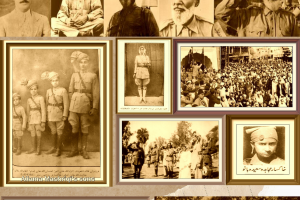The Arab Spring carried the promise that social media and the Internet were going to unleash a new wave of positive social change. But the past five years have shown that liberty isn’t the only end toward which these tools can be turned.
By Jessi Hempel
Five years ago this week, massive protests toppled Egyptian President Hosni Mubarak, marking the height of the Arab Spring. Empowered by access to social media sites like Twitter, YouTube and Facebook, protesters organized across the Middle East, starting in December 2010 in Tunisia, and gathered together to speak out against oppression, inspiring hope for a better, more democratic future. Commentators, comparing these activists to the US peace protesters of 1968, praised the effort as a democratic dawn for an area that had long been populated by autocracies. In a photo collection published by The New York Times a few months later, Irish writer Colum McCann wrote: “The light from the Arab Spring rose from the ground up; the hope is now that the darkness doesn’t fall.”
The darkness has fallen. Half a decade later, the Middle East is roiling in violence and repression. Activists are being intimidated into restraint by governments that are, with the exception of Tunisia, more totalitarian than those they replaced, if any government as such really exists at all. Meanwhile, militants have harnessed the same technology to organize attacks and recruit converts, catapulting the world into instability. Instead of new robust democracies, we have a global challenge with no obvious solution. The Arab Spring carried the promise that social media and the Internet were going to unleash a new wave of positive social change. But the past five years have shown that liberty isn’t the only end toward which these tools can be turned.
Activists were able to organize and mobilize in 2011 partly because authoritarian governments didn’t yet understand very much about how to use social media. They didn’t see the potential, says NYU professor of politics Joshua Tucker, a principle investigator at the Social Media and Political Participation Lab at New York University. “There are a lot of reasons the people in power were slow to pick up on this,” he adds. “One of the things about not have a free press is it is harder to learn what was going on in the world.”
Spreading Misinformation
Today, governments take an aggressive hand in shutting down digital channels people use to organize against them. In Egypt, for example, where 26 million people are on Facebook (up from 4.7 million people in 2011), security forces arrested three people who administered nearly two dozen Facebook pages, according to Egyptian media reports. It also detained activists who had been involved in prior protests. And at the end of December, the government shut down Facebook’s Free Basics service, which had offered free Internet services to Egyptians on mobile phones. More than 3 million people had signed up for the program in just two months, according to Facebook. Meanwhile Turkey has made 805 requests for tweets to be removed since 2012, according to Twitter’s most recent transparency report; more than half were made last year.
These governments have also become adept at using those same channels to spread misinformation. “You can now create a narrative saying a democracy activist was a traitor and a pedophile,” says Anne Applebaum, an author who directs a program on radical political and economic change at the Legatum Institute in London. “The possibility of creating an alternative narrative is one people didn’t consider, and it turns out people in authoritarian regimes are quite good at it.”
Even when activists are able to get their messages out, they have trouble galvanizing people to actually take action. The sentiments that gain the largest audiences often contain religious elements, according to Mansour Al-hadj, who is a director at the Middle East Media Research Institute. “The message by itself without any religious element in it, wouldn’t work in the long run,” he says. “The activists’ accounts on Twitter and Facebook are very active and they have a lot of followers, but they cannot drive masses,” he says, because their sentiments are more moderate.
Laced through media coverage of the Arab Spring was what turned out to be the naïve hope that people were inherently, unequivocally good and that unleashing their collective consciousness via social media would naturally result in good things happening. But it turns out that consciousness was not so collective after all. The tools that catalyzed the Arab Spring, we’ve learned, are only as good or as bad as those who use them. And as it turns out, bad people are also very good at social media. Militant groups like the Islamic State have been reported to recruit converts using Facebook and Twitter and use encrypted communications technology to coordinate attacks.
To be sure, the Arab Spring protests—and the subsequent political protests from Occupy Wall Street to Russian demonstrations in 2012—were significant. They introduced a new form of political and social organizing, of “hyper-networked protests, revolts, and riots.” But we’re just beginning to understand the impact of this new communications technology. Social media, it turns out, was not a new path to democracy, but merely a tool. And for a few brief months, only the young and the idealistic knew how it worked.
Originally published in Wired.




